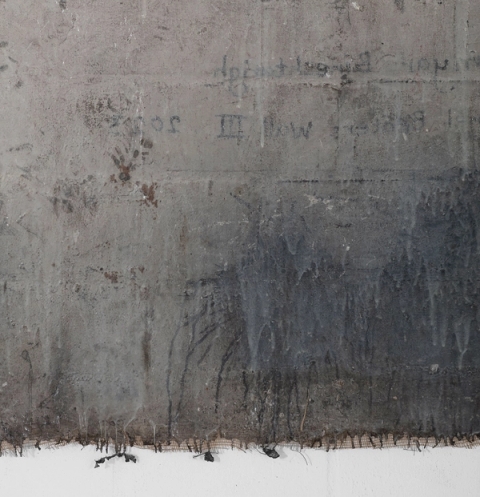My Enquiry (0)
No artwork has been selected.
Please choose an artwork to enquire.
Enquiry Submitted
Thank you for your enquiry and interest in our artists’ work. A member of the gallery team will respond shortly.
000%

Work by Kamyar Bineshtarigh in ‘Structures’, a group exhibition at JCAF
31 May 2025 (3 min) read
Structures brings together artists and architects from the South who engage with questions of space, place and race.
Kamyar Bineshtarigh’s Panel Beaters Wall III (2023) currently features in Structures, the second exhibition under the theme Worldmaking at the Joburg Contemporary Art Foundation (JCAF). The exhibition runs until 15 November 2025.
JCAF is currently undertaking a three-year programme in which the theme of Worldmaking is being explored through a trilogy of exhibitions, as well as an accompanying series of talks and publications that consider the kind of world we want to inhabit and leave behind. Last year, the foundation presented the first exhibition Ecospheres (2024), a reflection on the natural world, in which Southern Guild artist Zizipho Poswa featured. This year, Structures focuses on the built environment, while next year’s Futures (2026) is set to explore the techno-future.
A structure can be understood in both material and immaterial terms - it may represent a body of knowledge, a social framework, or an infrastructural system treated as a single entity held together by a plan, a pattern or a guiding logic.
Structures presents aspects and possibilities in the connection between people and places. Within this broad theme, issues of race, colonialism, migration and modernism are examined. The exhibition is curated in three interconnected sections: situatedness, infrastructures and typologies. Bineshtarigh’s piece is part of the first section, presenting the relationship between space and subjectivities through translation, memory, heritage and migration. The artwork by Kamyar Bineshtarigh, Hajra Waheed, Jellel Gasteli and Kader Attia are in dialogue.
For this exhibition, JCAF brings home the immersive South African Pavilion from the 2024 Venice Biennale (originally commissioned by the Department of Sport, Arts and Culture), installs a city made of couscous, presents an interactive installation by a women-led architectural collective, displays delicate photographs capturing light in Tunisia, and reconstructs a Brazilian installation from the 1970s that visitors can walk on, over and through.
While the featured artworks are charged with political concerns, they also explore the poetics of the relationship between materials and meaning, reflecting on what is embedded in physical structures - and how people themselves can become a form of infrastructure.
“At the heart of these concerns lies a central question: How have indigenous forms of artistry, tradition and knowledge contributed to architecture and everyday life in the Global South—more especially in a South African context?” asks JCAF’s Executive Director and curator of the exhibition, Clive Kellner.
Featured artists alongside Bineshtarigh include Jellel Gasteli, David Goldblatt, Kiluanji Kia Henda, MADEYOULOOK, Matri-Archi(tecture), Hélio Oiticica, Hajra Waheed, Igshaan Adams and Kader Attia. Additionally, there are three special projects by Wolff Architects, Rebecca Potterton and Stephen Hobbs.
ABOUT Bineshtarigh’s Panel Beater’s Wall III (2023):
Panel Beaters Wall III (2023) forms part of the abstract body of artworks produced for Bineshtarigh’s 2023 debut solo exhibition with Southern Guild, 9 Hopkins. This series of expansive, mixed-media paintings is at once an exploration of gestural mark-making and an engagement with the urban fabric of Salt River, an historic industrial area located close to central Cape Town. Working intuitively in conversation with his observed environment, Bineshtarigh lifted each of the new artworks from the painted walls of his then studio complex.
Panel Beaters Wall III finds its conceptual origins in the unintentional marks observed on the walls of the panel-beating workshop originally on the ground level of 9 Hopkins Street (the building has since been demolished). The auto workshop’s walls, covered in iterated hand and fingerprints, had been used for many years as a place to wipe paint, lacquer, grease and grit from the palms of the workmen. Inscribed with these handprints together with amassed layers of debris and paint remnants, the walls stood as accidental archives of presence, physical labour and human gesture. Panel Beater’s Wall III, along with all the works in this series, are all that remain of 9 Hopkins, existing now as expansive documents, recording and reflecting a particular place, time and existence.

